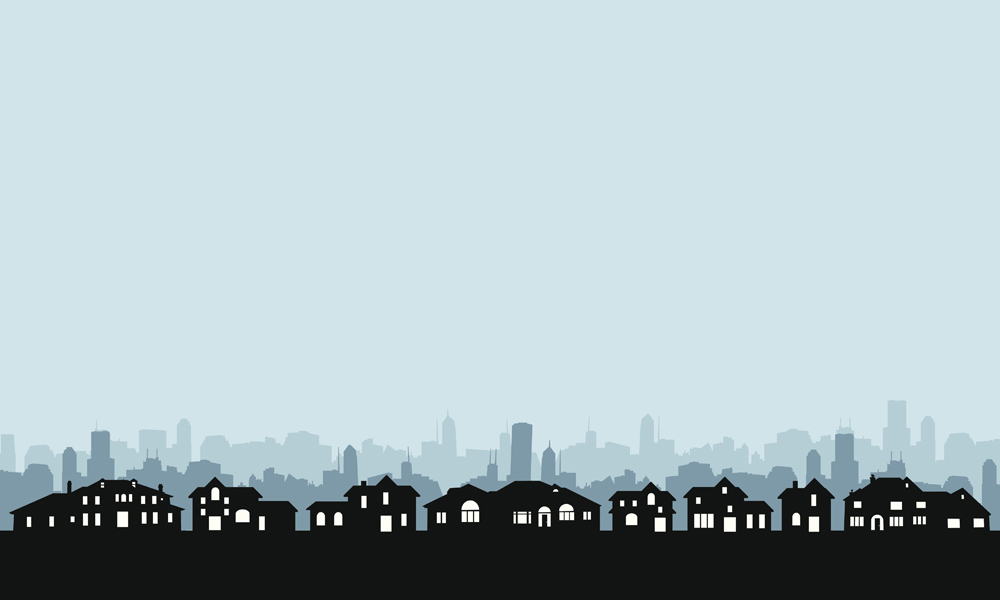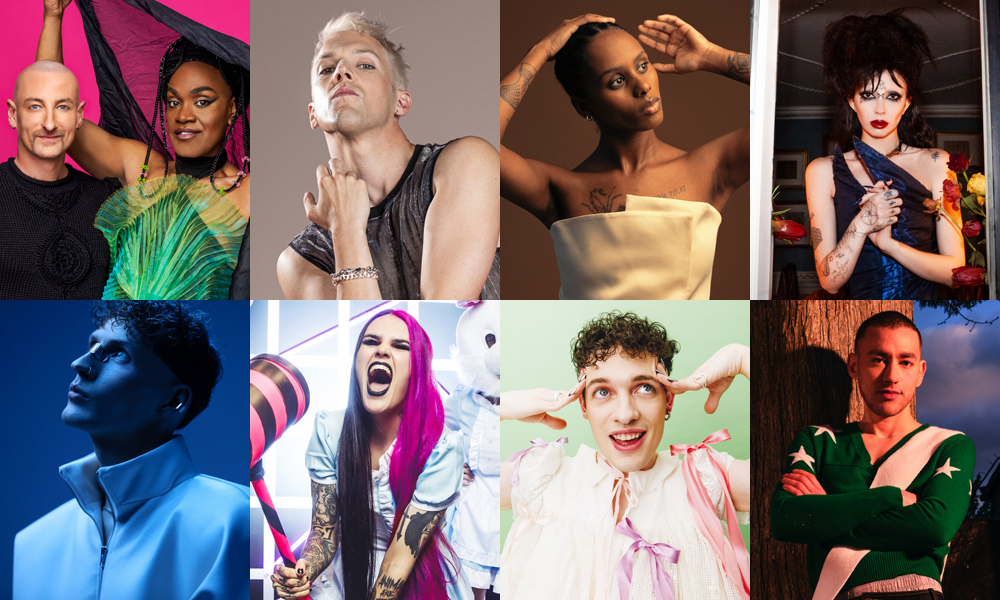The LGBTQ community needs to look at its metronormativity…
By Adam Zivo
Almost everything about contemporary LGBTQ life is concentrated in urban downtown cores. Our social institutions are firmly planted there, as are our bars and clubs. Queer activist circles are dominated by urban dwellers. Depictions of LGBTQ people in mass culture reinforce the idea that being queer is fundamentally an urban phenomenon. All of this fixation on urban centres, recently coined “metronormativity” by some academics, is no accident. It has its benefits, which were especially important for previous generations. However, it also has the side effect of erasing the challenges – and even the existence – of LGBTQ people living in suburban and rural areas. That’s unjust, and needs to be changed.
Downtown: from essential to peripheral
It’s important to understand why urban centres have historically been the natural home for LGBTQ communities. In many ways, it’s a story of density. It was in large metropoles where LGBTQ people first reached the critical mass needed to form their own spaces and carve out a parallel life for themselves, free from the withering prejudices of wider society. This is one of the basic benefits of city living: having enough people to support niche communities. Density also grants urbanites anonymity in their everyday lives. When you walk down a bustling city sidewalk, no one knows who you are. You can explore yourself without being subject to the social surveillance that’s endemic to rural and suburban communities. You’re free from the gossip of your neighbours, who could otherwise punish you for living a life they consider transgressive.
A second factor is the historical poverty of North American downtowns. It’s only in the past two decades or so that urban centres have become wealthy. Before that, they were undesirable and frayed, a place to work and not live, which also made them affordable places to inhabit. Though the LGBTQ community can be stereotyped as rich and privileged, statistically speaking LGBTQ people are economically marginalized, and were especially so in the earlier decades of LGBTQ acceptance. Employment descrimination is real, and the trauma of being outcast – whether from one’s family, community, or society more generally – has lifelong effects on socio-economic well-being. It’s no accident that LGBTQ people have had a tendency to settle in poorer neighbourhoods. Many couldn’t afford other options.
Lastly, at least with respect to the suburbs, there was deliberate exclusion. North American suburbs materialized in the aftermath of the Second World War. They were designed from the outset to be family-friendly places, embedded with expectations of moral propriety. Zoning laws were designed to minimize vice, with ample space allocated for churches and little tolerance given to bars and other “moral hazards.” In the United States, banks were incentivized to give mortgage assistance to married men so they could foster their suburban families, while being instructed to deny assistance to Americans suspected of “sexual deviance.”
These are some, though not all, of the key reasons why LGBTQ life often has a distinctly urban flavour. Once established, the association between the LGBTQ community and downtown cores became self-reinforcing. Depictions of LGBTQ people in popular culture seemed to invariably portray them in cities, all but ignoring suburban and rural LGBTQ life. To the extent that suburban and rural LGBTQ people are recognized, they’re portrayed as yearning to escape to the city, effectually hollowing out their rural and suburban identities by making them quasi-urbanites, temporary exiled outside the city, rather than examples of how gay life can legitimately be lived beyond downtown.
At the same time, enemies of LGBTQ rights have also framed queerness as an essentially urban phenomenon. Anti-LGBTQ sentiment, particularly in rural areas, frames LGBTQ communities as privileged, urban elites who neither understand nor respect non-urban values. They view LGBTQ folks as working in frivolous “soft” jobs, whether white collar or in the cultural sector, which contrasts against the “real” work of everyone else. Resentment of downtown values is a powerful political cudgel, as is homophobia and transphobia, and the two of them are often bonded by a marriage of convenience.
The end result is that rural and suburban LGBTQ folks, already an afterthought in the LGBTQ community, are made further invisible by both allies and enemies. Urban stereotypes soak up the spotlight, whether being celebrated or vilified, and non-urban gays sit elsewhere in the dark.
Paradigm shifts
Things aren’t what they used to be. The rise of queer digital spaces changed everything. Having first percolated in the 2000s, digital queer culture erupted in the 2010s with the rise of social media and dating apps, permanently transforming the way LGBTQ people congregate. With the rise of these digital alternatives, it was no longer necessary to make a pilgrimage to a gay bar or café to meet other queer folks.
The importance of physical proximity faded and gay neighbourhoods lost their indispensability to queer socializing. They’ve been slowly fading ever since. While many see this as a bad thing, mourning the lost vibrancy of urban gaybourhoods, the truth is that these neighbourhoods’ vibrancy came at a cost, since their success was contingent on LGBTQ people being unable to stake lives for themselves elsewhere. With more freedom to live where they want, LGBTQ people are seemingly beginning to disperse from urban centres.
At the same time, the rise of digital culture has made it easier for suburban and rural LGBTQ people to identify each other, something which was previously near impossible given the absence of community spaces that, in an urban context, help stitch people together. This, coupled with rising acceptance of LGBTQ people more generally, has made it easier for suburban and rural LGBTQ people to organize themselves into communities. Consequently, they’ve begun articulating their own specific needs, which differ from what is experienced by their urban counterparts.
In practice, this takes on many forms, which can be difficult to summarize because of the diversity of non-urban spaces that exist. The culture and challenges faced by an inner suburb are often very different from that of a small town or a fully rural area. However, some illustrative examples include the rise of small-town Pride festivals and, in suburban neighbourhoods, the rise of grassroots support programs.
In general, these support systems differ from their urban counterparts by simultaneously being less corporate and more politically moderate. They’re grassroots organizations, more focused on offering services and sanctuary than transforming the world with grandiose rhetoric. Rather than inhabiting their own dedicated spaces, they often borrow space from other institutions, like churches, municipal buildings and universities. An illustrative example would be Toby’s Place, which, since 2017, has serviced queer youth in south Scarborough. Their informality and relative lack of history can obstruct them from securing the funding they need to thrive, as can their inability to compete with more established LGBTQ players, who reside downtown and soak up funding like a sponge.
Sending support beyond the downtown core
Now that there is growing awareness of, and advocacy for, suburban and rural LGBTQ spaces, it’s important for urban LGBTQ people to consider how to support them. Downtown activists are generously endowed with the knowledge and resources to advocate for change. However, they too often fail to look outside their urban bubbles, failing to appreciate that, though they may exist in a space where homophobia and transphobia is relatively controlled, others may not be so lucky. Though urban organizations may have more limited opportunities to help rural organizations, where they can really help is by extending outreach to the inner suburbs.
Consider, as a case study, a young lesbian who lives with her parents on the fringes of Scarborough – or any inner suburban neighbourhood, really. Technically she lives in a city where there are robust support networks for her. There are health centres, community centres and a Pride Parade…but they are all very far away. Functionally, they might as well be in a different city. What does that mean to her if it takes her over an hour, at best, to commute there by transit? How much equity is there for her, given these barriers, especially if her time is limited, being eaten up by work, or if her family doesn’t accept her and subjects her to passive surveillance?
Downtown activists might consider how to support people like her. In practice, that could look like running satellite services in inner suburban neighbourhoods, rather than exclusively expecting inner suburban citizens to make pilgrimages downtown. It could mean pushing Pride parades to organize events located in, and catered to, suburban neighbourhoods, making it safer and more practical for folks living on the geographic margins to have a Pride experience. It could mean investing resources and training suburban activists, fostering inter-neighbourhood partnerships that treat suburban LGBTQ communities as equal to, and not subsidiaries of, their downtown counterparts.
There’s a racial and economic justice component to all this, too. In a reversal of fortunes, urban cores – destitute only a generation ago – have become islands of wealth, while inner suburbs have become marginalized and poor. Given the unjust correlation between race and poverty, inner downtown cores tend to be white while inner suburbs are disproportionately racialized. Hence, to shift attention to the inner suburbs is to push LGBTQ resources closer to the kinds of neighbourhoods that racialized North Americans actually tend to live in, adding more credibility to the LGBTQ community’s commitment to fighting racism.
All of this is just a start, one that doesn’t even begin to fully explore all the different ways that the LGBTQ community can constructively deal with its metronormativity. Everything has to start somewhere, though.
—
ADAM ZIVO is a Toronto-based social entrepreneur, photographer and analyst best known for founding the LoveisLoveisLove campaign.







POST A COMMENT